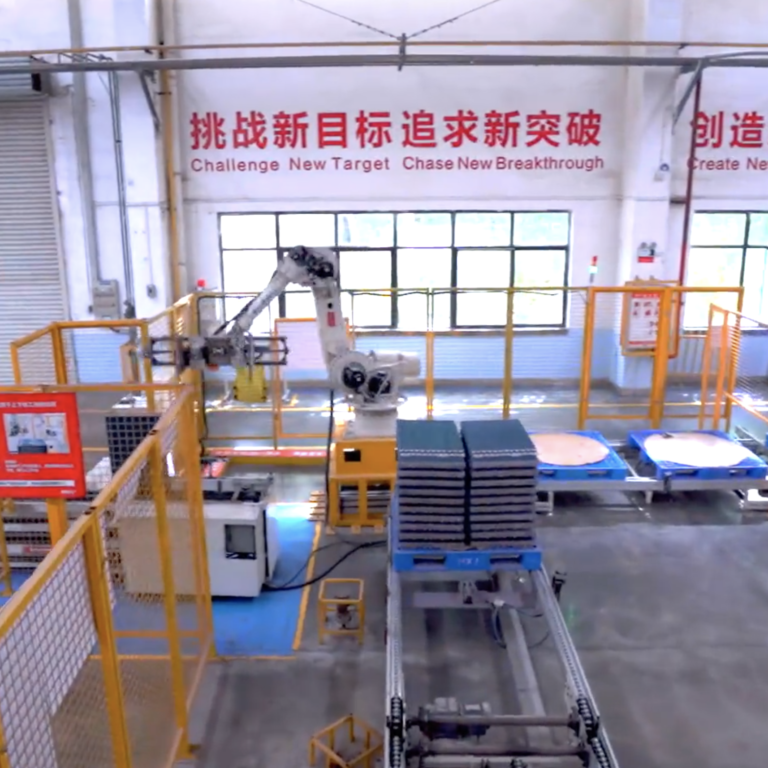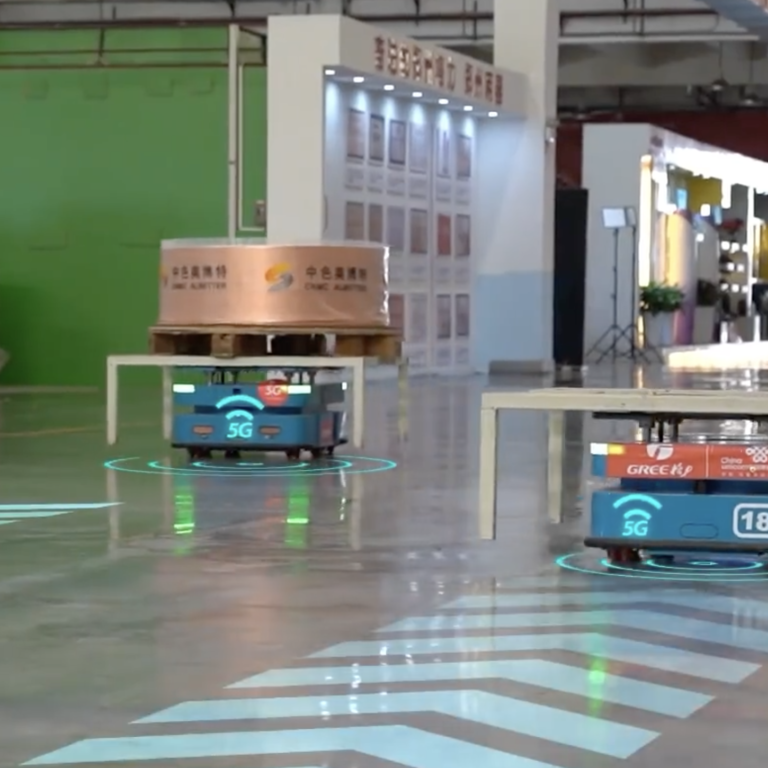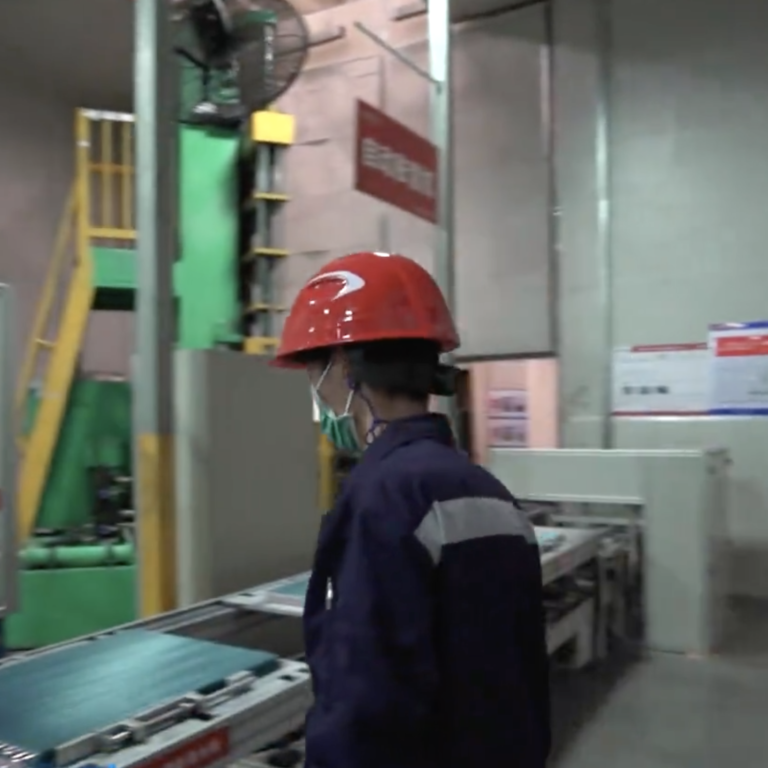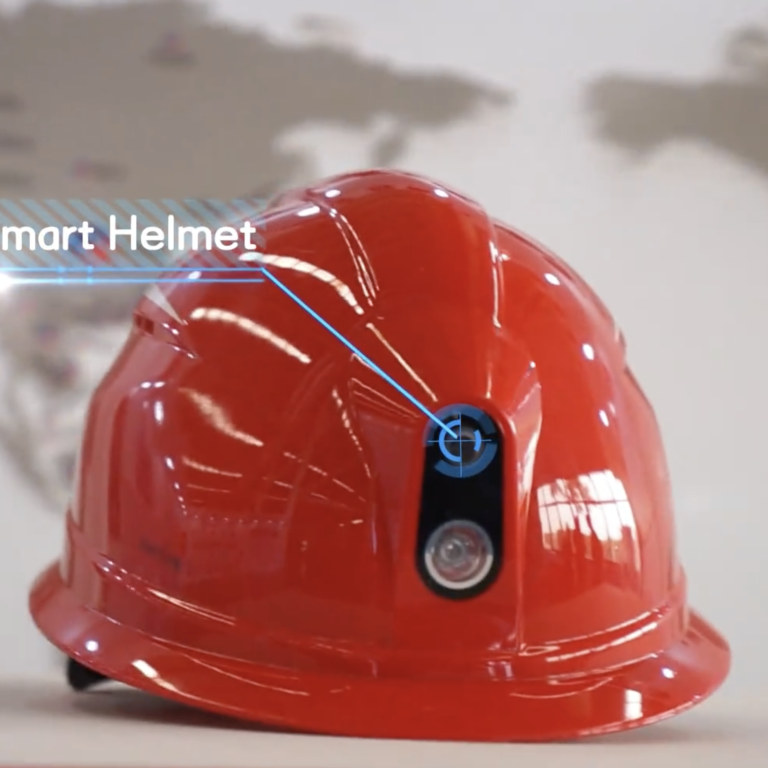5G Transformation Hub
5G and MEC smart factory operations at Gree Zhengzhou
How 5G enables streamlined, secure and safer production
In September 2020 the Zhengzhou factory of Gree Electric Appliances integrated 5G connectivity with advanced industrial internet technologies to test the benefits of intelligent manufacturing applications based on 5G + MEC. Throughout 2021 the project delivered a smart factory underpinned by a private 5G network – with 5G applications introduced to production, safety and inspection systems, establishing a new model of digital transformation for the home appliance manufacturing industry.
Select a project
Contents
Challenge
Fragmentation between information systems led to data silos, creating barriers to operating cost efficiencies and development of new applications, as production managers needed to switch between systems to obtain key data. The accuracy of visual quality inspections also proved difficult to improve via traditional image processing algorithms, while AI algorithms required excessively intensive resource investment; data was difficult to aggregate, meaning its value could not be exploited; and the necessity for large-scale replication of data resulted in significant costs for computing resources, operation and maintenance.
Solution
An independent 5G private network was deployed to support ultra-high bandwidth and ultra-low latency. A 5G based IoT platform and MEC edge enabled converged access for network types for device management, application use and operation, while unifying collection and sharing of data. A machine vision platform then accelerated training of AI algorithms to improve image recognition and reduce replication costs. 5G-navigated AGVs were brought in for automatic material delivery, drones and robots were used for inspection and smart wearables using AI for improved positioning, perception and early warning.
Impact & Statistics
The project achieved the goals of intelligent production set by Gree, realising digital linkage in the whole chain of product R&D, process, manufacturing and quality. The IoT platform connected more than 10 existing subsystems through the northbound interfaces, truly realising data connection and allowing operations to become data-driven. Onsite deployment costs were reduced by 80%, and manpower by 15 workers, while the rate of dropped connections was also reduced by 80%, by resolving the problem of AP switching.
Wider Implications
The independent 5G private network could evolve to fixed mobile convergence in future. The successes of this project will produce the knowledge to replicate the solution across the wider manufacturing industries in Central China - Gree Zhengzhou will play a leading role in encouraging enterprises how they can accelerate digital transformation
Stakeholders
Gree Electric Appliances, China Unicom and ZTE
02
How did 5G help Gree Zhengzhou meet its objectives?
An ‘1+2+N+S’ system architecture was successfully established, that is 1 5G independent Private Network, 2 enterprise-level capability platforms, numerous 5G applications, and one end-to-end active security protection system for 5G IIoT business scenarios.
By deploying an industry 5G core (i5GC) independent Private Network, and using it for dedicated purposes with full physical on-site isolation, the project could take full advantage of the ultra-high bandwidth and ultra-low latency of 5G. Two i5GCs were deployed in a pool on-site for disaster recovery and backup, and loads were shared by devices to ensure high security and high reliability. This allowed Gree to introduce full-scenario and full-process production safety systems.
The i5GC supports the capacity to evolve to fixed mobile convergence in the future, which allows the ubiquitous access of various terminals in the industry park, and realises centralised management, operation and maintenance. In addition, the i5GC may be continuously evolved and enhanced to 3GPP R16, and supports innovative features such as 5G LAN, QoS monitoring and TSN, constantly empowering the smart factory with new capabilities to achieve lean production.

03
What positive change is being made, and how?
The production efficiency and safety capabilities of the factory have been considerably improved since the beginning of the project.
For security and surveillance, 5G drones and patrol inspection robots were deployed, realising real-time backhaul of 7-channel video through the 5G network to provide all-around protection in every corner of the industry park. For workplace safety requirements, integrated smart wearables were introduced featuring positioning, perception, early audio warning and video communication, and an integrated ‘cloud + terminal’ management platform based on a shared IP architecture to solve problems associated with on-site safe production. Perception, analysis, service, command and monitoring were all integrated, and a new model of production safety management focusing on intelligent and fine-grained management was developed.
The enterprise-level IoT platform deployed relying on 5G + MEC edge cloud not only allow converged access of heterogeneous networks such as 4G, 5G, eMTC and NB-IoT in the workshops, but also enable connection management, device management, application enablement, operation support and other capabilities for IoT applications. This realised unified collection, management and sharing of data from different terminals, online management and remote operation and maintenance of various types of intelligent terminals.
The machine vision platform based on 5G + MEC for AI model training and AI inference not only accelerated AI algorithm training, but also allowed for analysis and inference of images that were centrally connected to 5G on MEC, improving the compatibility and recognition accuracy of algorithms for multiple workstation replication. As a result, the marginal deployment cost was significantly reduced, and the large-scale replication of machine vision scenarios in the workshops was accelerated. In the future, the machine vision platform will accommodate hundreds of machine vision applications across the factory, and operation or maintenance of the independent machine vision scenario will be realised without adding algorithm engineers.

04
Did the project need to resolve any technical challenges?
At the levels of network and system platform, the innovative application of 5G + MEC brought about protection problems for edge virtualization platforms, and security threats such as industrial control protocol vulnerabilities, intranet viruses/Trojans, and Internet DDoS attacks were ubiquitous. At the terminal level, 5G terminals widely used in factories, such as CPE, industrial gateways, AGVs, and safety helmets, also had many potential risks such as inadequate terminal security design, untimely update of patches for system vulnerabilities, weak passwords, plaintext data or simply encrypted transmission.
In terms of platform network, 5G network security capabilities including differentiated slicing and security isolation were used to meet the requirement of data security inside the industry park. Intranet security measures such as dynamic firewall were used to guard against intranet viruses and Trojan horses, and platform application security measures such as cloud native security and two-factor authentication were used to ensure the security of virtual MEC. In addition, the system also provided data security capabilities for the full life cycle.
Considering the difficulty in upgrading hardware, Gree took four measures to ensure terminal security of 5G applications and data security: conducting security testing before launching terminals; using electronic fences, blacklists, and whitelists for network access authentication; applying zero-trust access control for terminal access; and providing monitoring and handling of abnormal traffic.

05
Why should other businesses in the industry follow this example? What are the next steps?
As urbanisation accelerates, and people's living standards continue to improve, the home appliance industry is witnessing rapid development.
Meanwhile, due to the trend towards increasingly intelligent and customized home appliances, shorter product life cycles, and increasingly high quality requirements, digital transformation is urgently needed across home appliances industry.
Collaboration between ecosystem partners will be crucial if this is to be achieved. The success of this project relied in part on the joint efforts of the 5G Intelligent Manufacturing, Development and Application Laboratory, and the 5G Empowering Industrial Internet Joint Innovation Laboratory, established by the three partners for R&D and rapid output of products and solutions by accelerating technical verification, model verification and commercial application.
In future, greater efforts will be made based on the existing achievements of the project to connect all the equipment and apply machine vision inspection in over 100 scenarios in the factory. Moreover, as industrial internet services such as Gree’s flexible production continue to develop, protection measures for internet security and industrial control security may be adopted in the future to protect 5G application security further.
This project will also be replicated and promoted in other discrete manufacturing industries in Central China. At the same time, Gree Zhengzhou will continue to play a leading and exemplary role in the local industrial cluster, encouraging dozens of supporting enterprises around it to speed up digital transformation.

06
About
About the GSMA
The GSMA is a global organisation unifying the mobile ecosystem to discover, develop and deliver innovation foundational to positive business environments and societal change. Our vision is to unlock the full power of connectivity so that people,
industry, and society thrive. Representing mobile operators and organisations across the mobile ecosystem and adjacent industries, the GSMA delivers for its members across three broad pillars: Connectivity for Good, Industry Services and Solutions, and Outreach. This activity includes advancing policy, tackling today’s biggest societal challenges, underpinning the technology and interoperability that make mobile work, and providing the world’s largest platform to convene the mobile ecosystem at the MWC and M360 series of events.
For more information, please visit the GSMA corporate website at www.gsma.com.
Follow the GSMA on Twitter: @GSMA.
GSMA 5G Transformation Hub
The GSMA 5G Transformation Hub is a source of information on some of the most innovative 5G solutions in the world. This portal contains case studies detailing design, benefits, key players, measured value and the future impact of scaling up these 5G solutions worldwide. The 5G Era is now firmly established and this family of standardised GSM technologies, including mmWave, are being rolled out successfully across the globe. The GSMA 5G Transformation Hub, launched at MWC Barcelona in 2022, provides details of how 5G is best placed to deliver real value for a range of key sectors including manufacturing, energy, transportation, media and live entertainment, smart cities and construction.. Many more case studies will be added, in the coming months, covering even more industries and the GSMA is asking Members to nominate innovative 5G case studies to add to this global digital showcase. The 5G Transformation Hub and this particular Case Study are both sponsored by Qualcomm.
About this case study
This case study is for information only and is provided as is. The GSM Association makes no representations and gives no warranties or undertakings (express or implied) with respect to the study and does not accept any responsibility for , and hereby disclaims any liability for the accuracy or completeness or timeliness of the information contained in this document. Any use of the study is at the users own risk and the user assumes liability for any third party claims associated with such use.